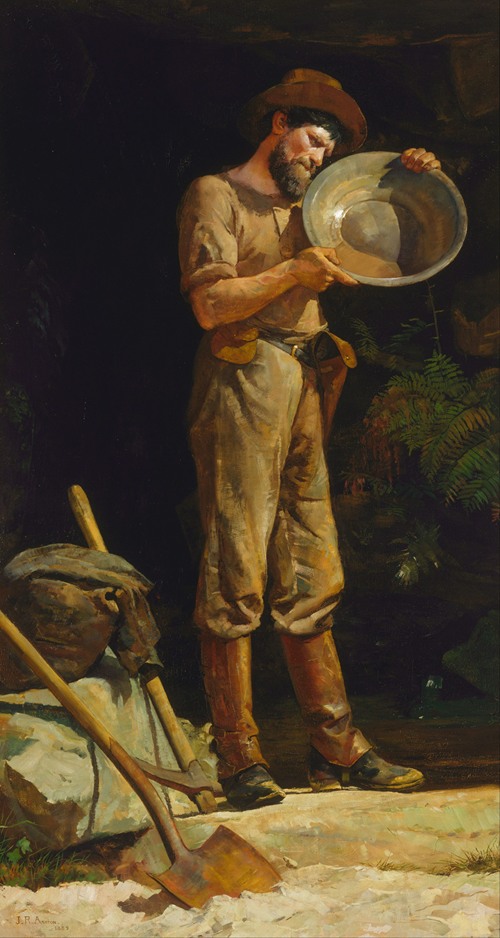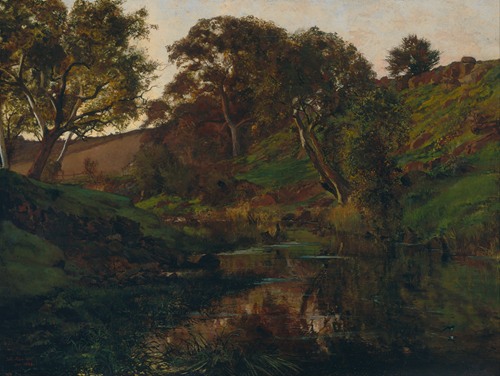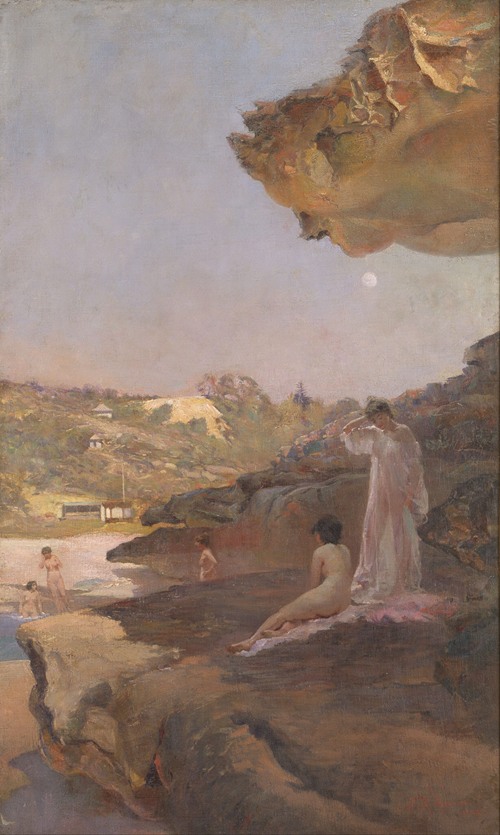

Julian Ashton
Julian Rossi Ashton CBE was an English-born Australian artist and teacher. He is best known for founding the Julian Ashton Art School in Sydney and encouraging Australian painters to capture local life and scenery en plein air, greatly influencing the impressionist Heidelberg School movement.
He was a principal organiser of the 1898 Exhibition of Australian Art in London, the first major exhibition of Australian art internationally.
Ashton was born in Addlestone, Surrey, the son of American amateur painter Thomas Briggs Ashton, and his wife Henrietta, daughter of Count Carlo Rossi, a Sardinian diplomat who married the soprano Henriette Sontag. The family moved to Penzance, Cornwall shortly after, and lived at Burley Grove, Gulval. At the age of 11, the family moved again to Totnes, Devon. His father died in 1864, and around age 15 he began working in the engineers' office of either the Great Western Railway or Great Eastern Railway. There he remained for six years using his entire leisure time painting at South Kensington. During this time he studied at the West London School of Art for three years. He then went to study at the Académie Julian in Paris and began illustrating books. He also had considerable success as a painter, exhibiting at the Royal Academy of Arts and elsewhere.
Ashton emigrated to Melbourne in 1878 under contract to David Syme's Illustrated Australian News and lived there for five years before moving to Sydney.
He was the elected president of the Art Society of New South Wales from 1886 to 1892. From 1892 to 1895 he taught classes on behalf of the society but was dismissed after choosing to exhibit his works with the newly formed Society of Artists.
He had a background in the contemporary French realism of the Barbizon School, which emphasised painting en plein air (i.e. direct from nature, as opposed to studio-based painting), and which laid the basis for the Impressionist movement. As a trustee of the Art Gallery of New South Wales he championed emerging Australian artists of the Australian Impressionist or Heidelberg School, and the Gallery's decision to collect these works owes much to his influence. Ashton is known for his paintings Evening, Merri Creek (1882), A Solitary Ramble (1888) and others.
Ashton married twice: to Eliza Ann Pugh (died 15 July 1900) in Hackney, London on 1 August 1876, by whom he had four sons and a daughter.
He married again, on 8 September 1902 to (Constance) Irene Morley (died 11 April 1946).
On Monday, 27 April 1942 Ashton died at Bondi, Sydney, aged 91, after a long illness. Until his death he had still been an art teacher to others. The service for the 'Grand Old Man of Australian art' was held at the Northern Suburbs Crematorium on 29 April 1942.
Ashton also had a brother, George Rossi Ashton (born 1857), a black-and-white artist who lived in Australia between the years 1878 and 1893 before returning to London. He married Blanche Brooke Coppin, a daughter of George Coppin, in Melbourne on 23 October 1883.


